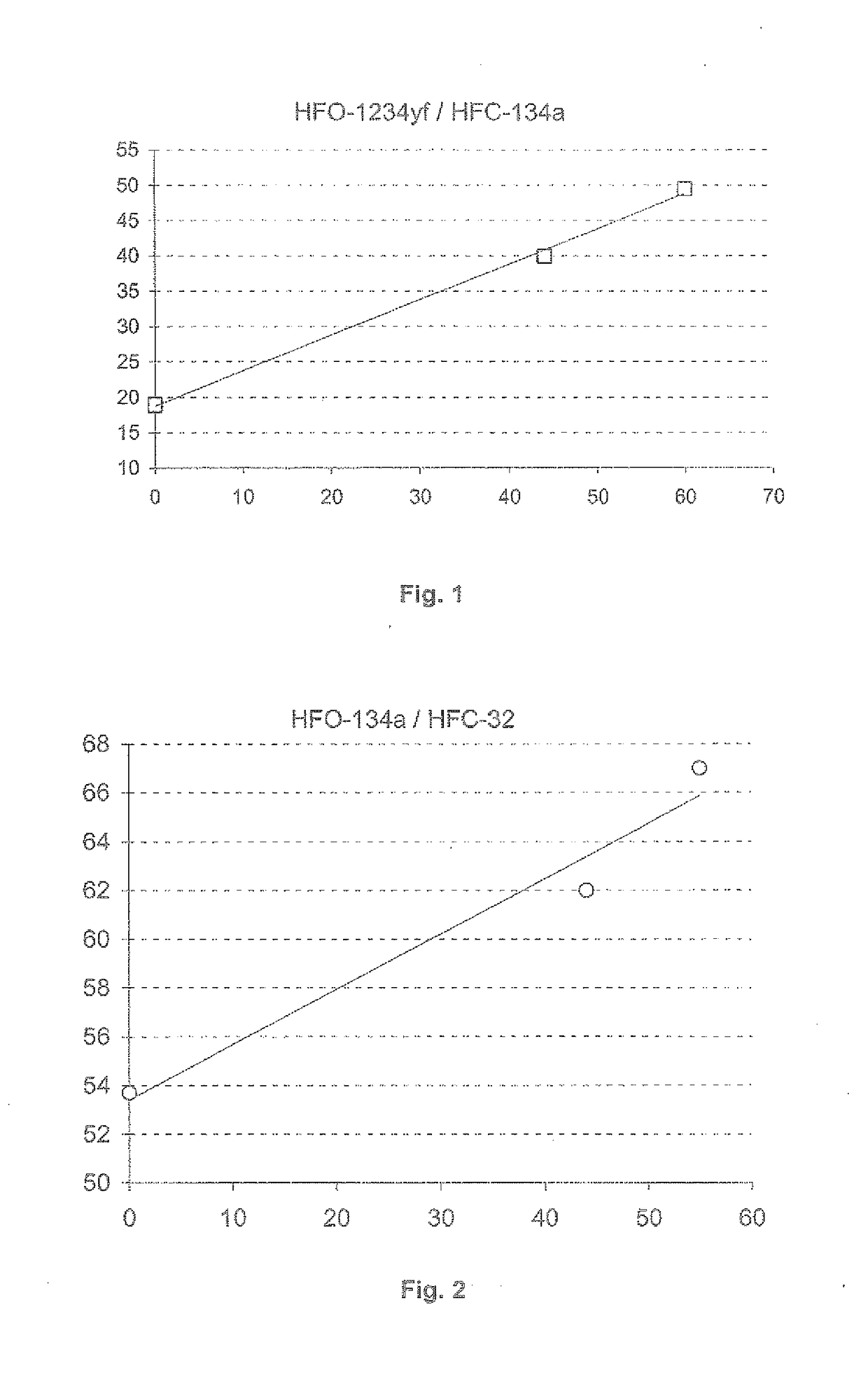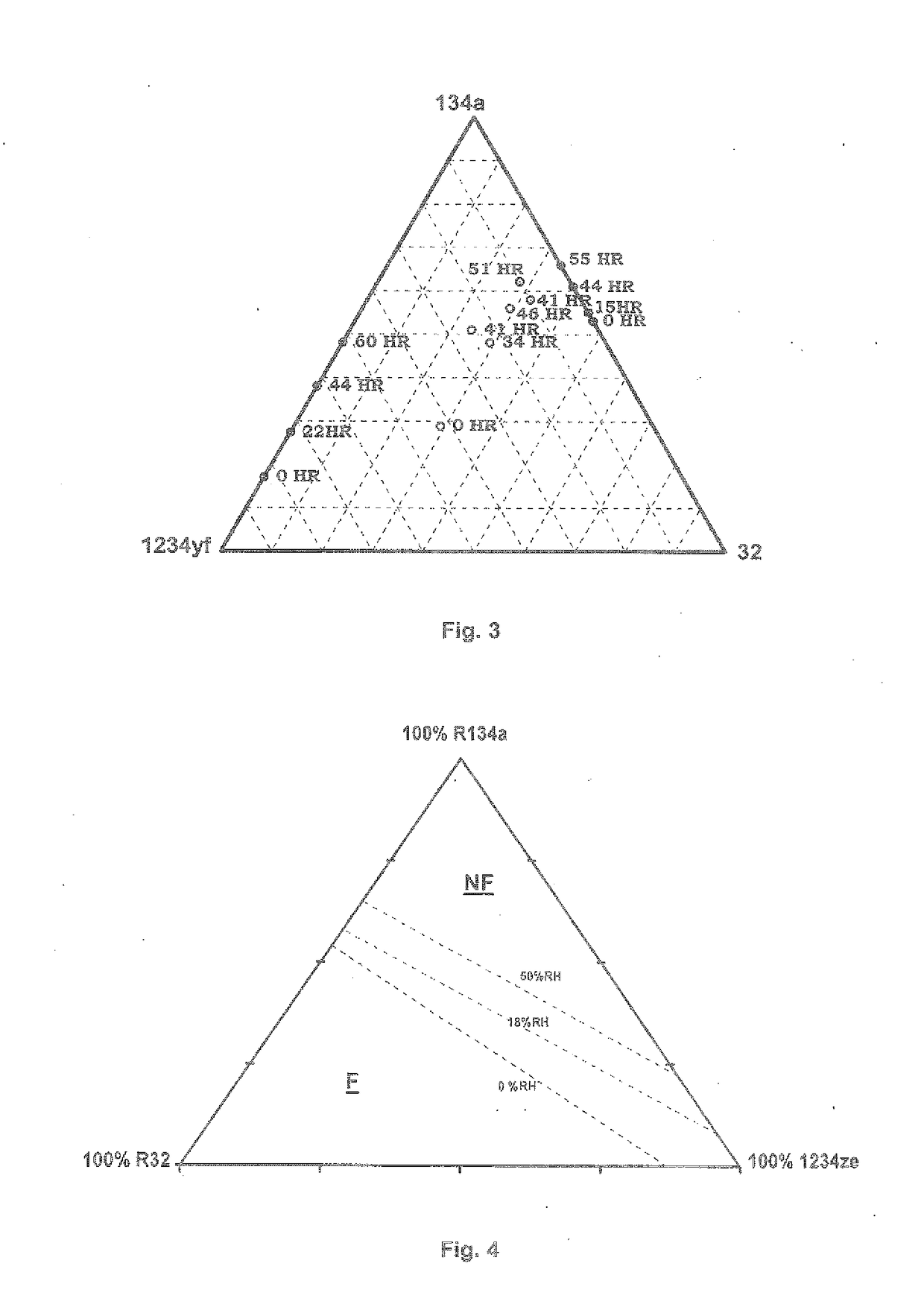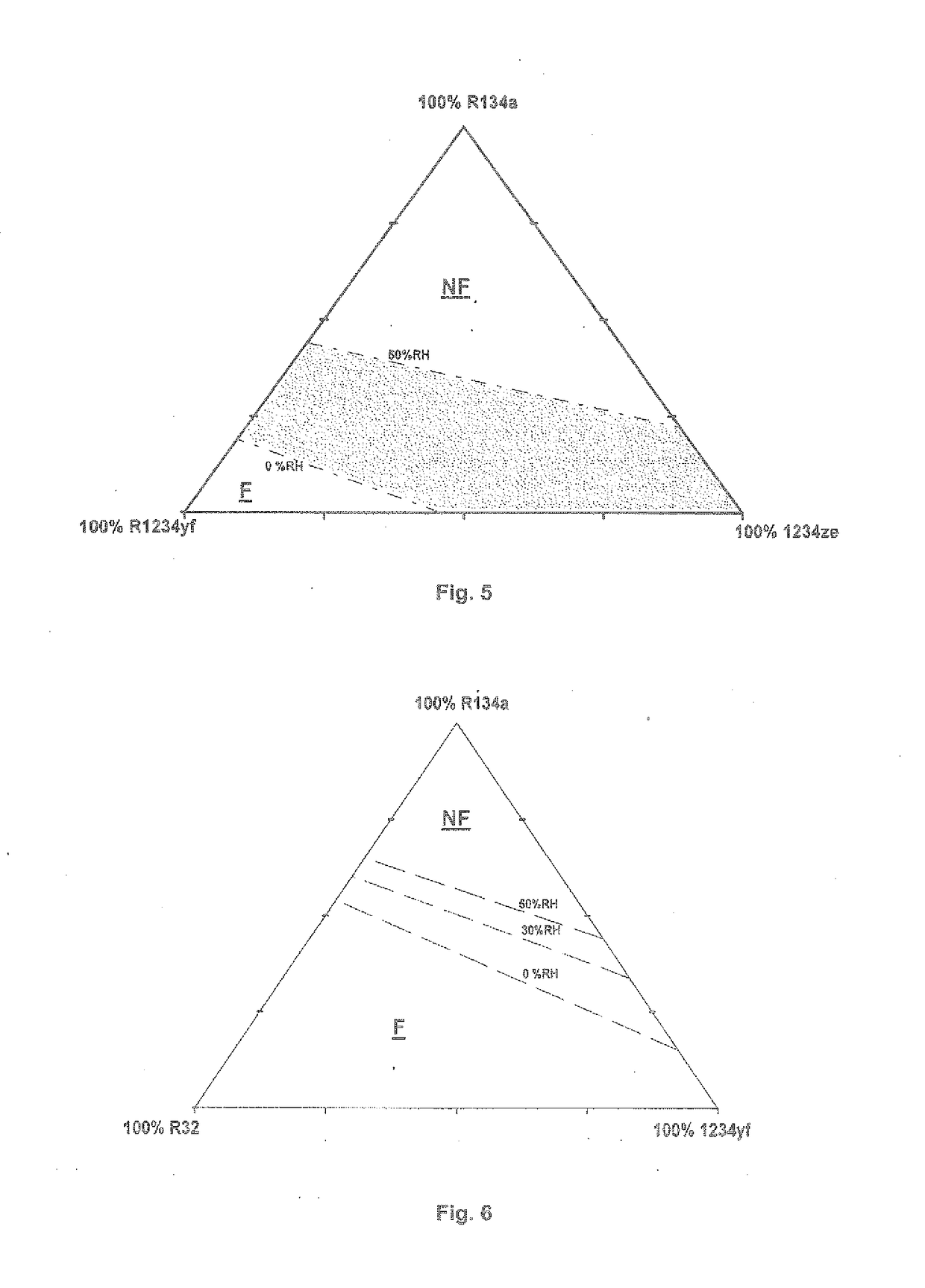Heat-transfer fluids having reduced flammability
a technology of heat transfer fluid and flammability, which is applied in the field of heat transfer fluid, can solve the problems of ozone layer damage to chlorinated compounds, olefin compounds have a tendency to be more flammable than saturated compounds, etc., and achieve the effect of less flammability, less drawbacks, and equivalent (or even improved) flammability
- Summary
- Abstract
- Description
- Claims
- Application Information
AI Technical Summary
Benefits of technology
Problems solved by technology
Method used
Image
Examples
example 1
of Relative Humidity on the Flammability of HFO-1234yf
[0286]Flammability tests were carried out on HFO-1234yf under humid conditions and under dry conditions according to the protocol of the standard ASTM E681. A glass sphere of gas is arranged in an oven maintained at 25° C. The sphere is placed under vacuum, the gas to be tested is introduced, made up with air to atmospheric pressure, a spark is released in the mixture thus prepared and any flame front is observed over more than 90° with respect to the ignition point. Then the quantity of gas is modified until an angle greater than or equal to 90° is reached, defining the ignition and non-ignition zone. The tests are carried out at 60° C.
[0287]The air used in the test is either ambient air with relative humidity monitored with a hygrometer (between 35 and 45% relative humidity, i.e. a water content of 12 mbar on average); or Praxair 5.0 synthetic dry air (with a maximum specification of 2 vpm of water).
[0288]Under humid conditions...
example 2
of Relative Humidity on the Flammability of the HFO-1234yf / HFC-134a Mixture
[0291]Tests are carried out in a manner similar to Example 1 on HFO-1234yf / HFC-134a binary mixtures of different compositions. Air with 60% relative humidity (ambient air, reference relative humidity of 50% monitored by a hygrometer), air with 40% relative humidity (obtained by dilution of ambient air with dry air), air with 20% relative humidity (obtained by dilution of ambient air with dry air) and dry air with approximately 0% relative humidity.
[0292]For each condition of relative humidity a maximum HFO-1234yf content (or a minimum HFC-134a content) in the binary mixture making it possible to have a non-flammable mixture (no flame propagation over more than 90°) is determined.
[0293]The results are represented in FIG. 1. The loss of 1% relative humidity makes it possible to reduce by approximately 0.5% the proportion by mass of HFC-134a without degrading the flammability of the mixture.
example 3
of Relative Humidity on the Flammability of the HFC-134a / HFC-32 Mixture
[0294]Tests are carried out in a manner similar to Example 1 on HFC-134a / HFC-32 binary mixtures of different compositions. Air with 55% relative humidity (ambient air, reference relative humidity monitored by a hygrometer), air with 44% relative humidity (obtained by dilution of ambient air with dry air), air with 20% relative humidity (obtained by dilution of ambient air with dry air) and dry air with approximately 0% relative humidity.
[0295]For each condition of relative humidity a maximum HFC-134a content (or a minimum HFC-32 content) in the binary mixture making it possible to have a non-flammable mixture (no flame propagation over more than 90°) is determined.
[0296]The results are shown in FIG. 2. The loss of 1% relative humidity makes it possible to reduce by approximately 0.2% the proportion by mass of HFC-134a without degrading the flammability of the mixture.
[0297]The flammability of the HFC-134a / HFC-32 ...
PUM
| Property | Measurement | Unit |
|---|---|---|
| temperature | aaaaa | aaaaa |
| temperature | aaaaa | aaaaa |
| threshold | aaaaa | aaaaa |
Abstract
Description
Claims
Application Information
 Login to View More
Login to View More - R&D
- Intellectual Property
- Life Sciences
- Materials
- Tech Scout
- Unparalleled Data Quality
- Higher Quality Content
- 60% Fewer Hallucinations
Browse by: Latest US Patents, China's latest patents, Technical Efficacy Thesaurus, Application Domain, Technology Topic, Popular Technical Reports.
© 2025 PatSnap. All rights reserved.Legal|Privacy policy|Modern Slavery Act Transparency Statement|Sitemap|About US| Contact US: help@patsnap.com



